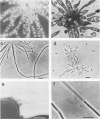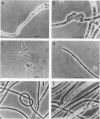Abstract
Seventeen strains of filamentous sulfur bacteria were isolated in axenic culture from activated sludge mixed liquor samples and sulfide-gradient enrichment cultures. Isolation procedures involved plating a concentrated inoculum of washed filaments onto media containing sulfide or thiosulfate. The isolates were identified as Thiothrix spp., Beggiatoa spp., and an organism of uncertain taxonomic status, designated type 021N. All bacteria were gram negative, reduced nitrate, and formed long, multicellular trichomes with internal reserves of sulfur, volutin, and sudanophilic material. Thiothrix spp. formed rosettes and gonidia, and four of six strains were ensheathed. Type 021N organisms utilized glucose, lacked a sheath, and differed from Thiothrix spp. in several aspects of cellular and cultural morphology. Beggiatoa spp. lacked catalase and oxidase, and filaments were motile. Biochemical and physiological characterization of the isolates revealed important distinguishing features between the three groups of bacteria. Strain differences were most evident among the Thiothrix cultures. A comparison of the filamentous sulfur bacteria with freshwater strains of Leucothrix was made also.
Full text
PDF
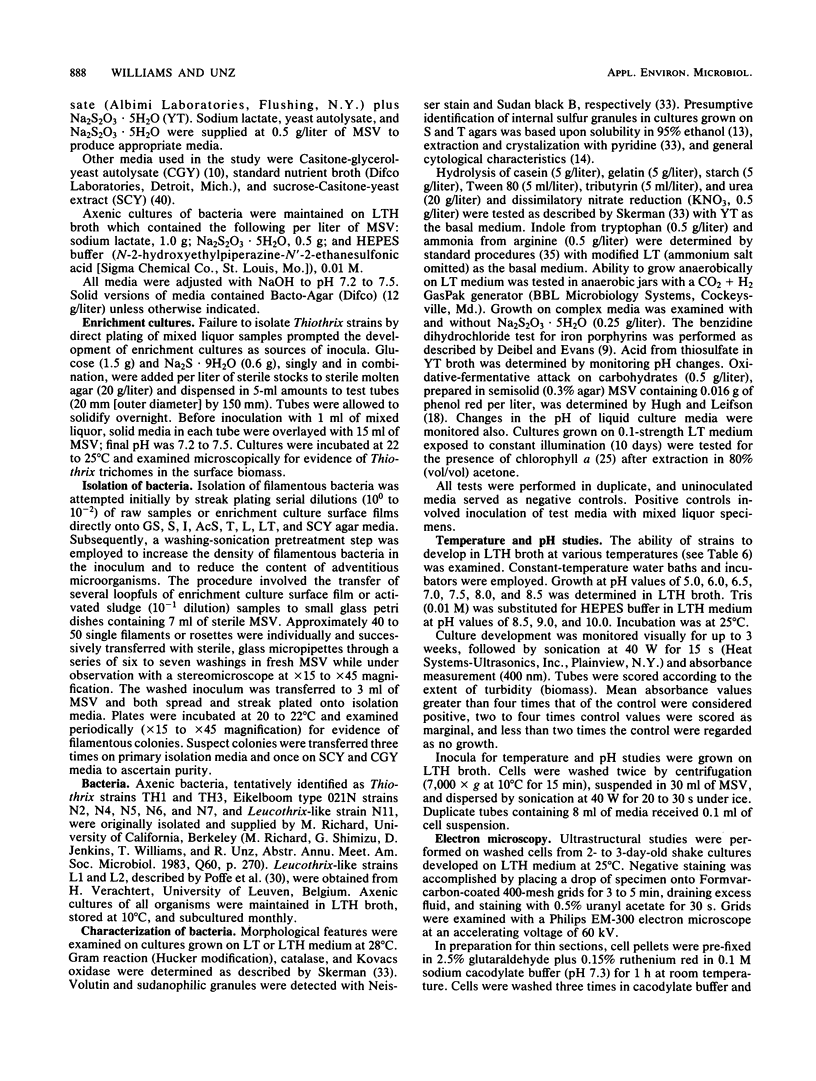

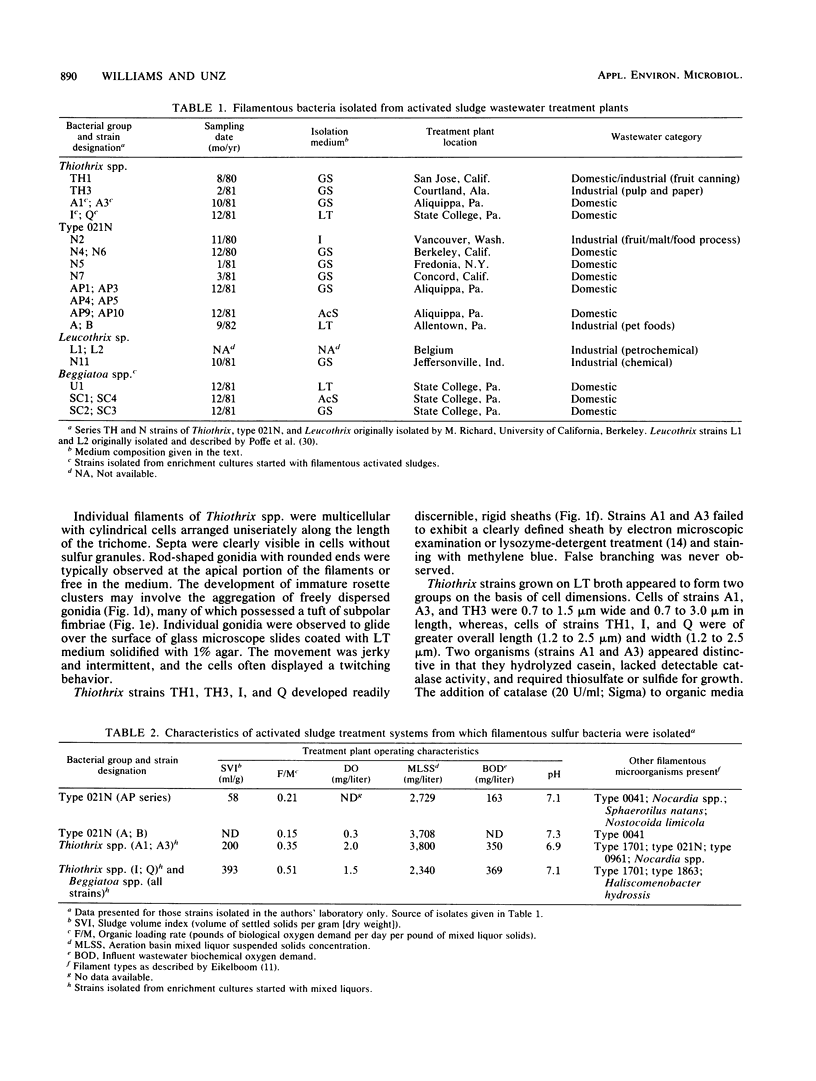



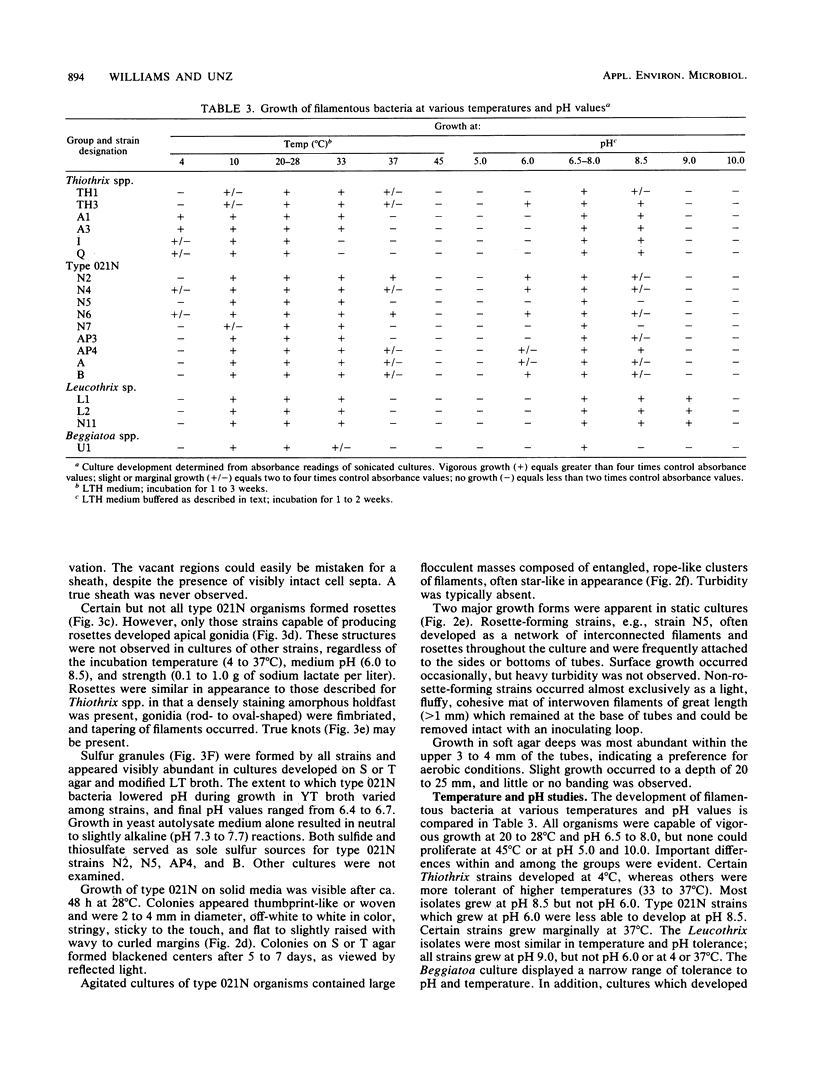
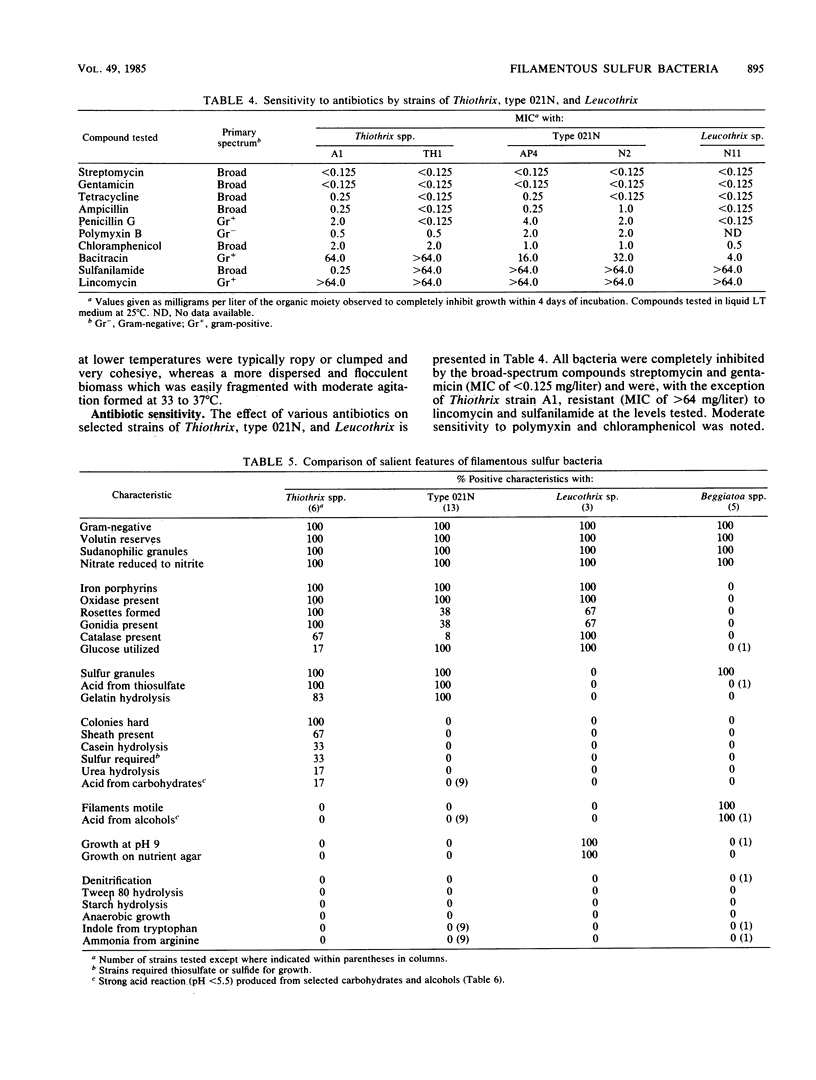

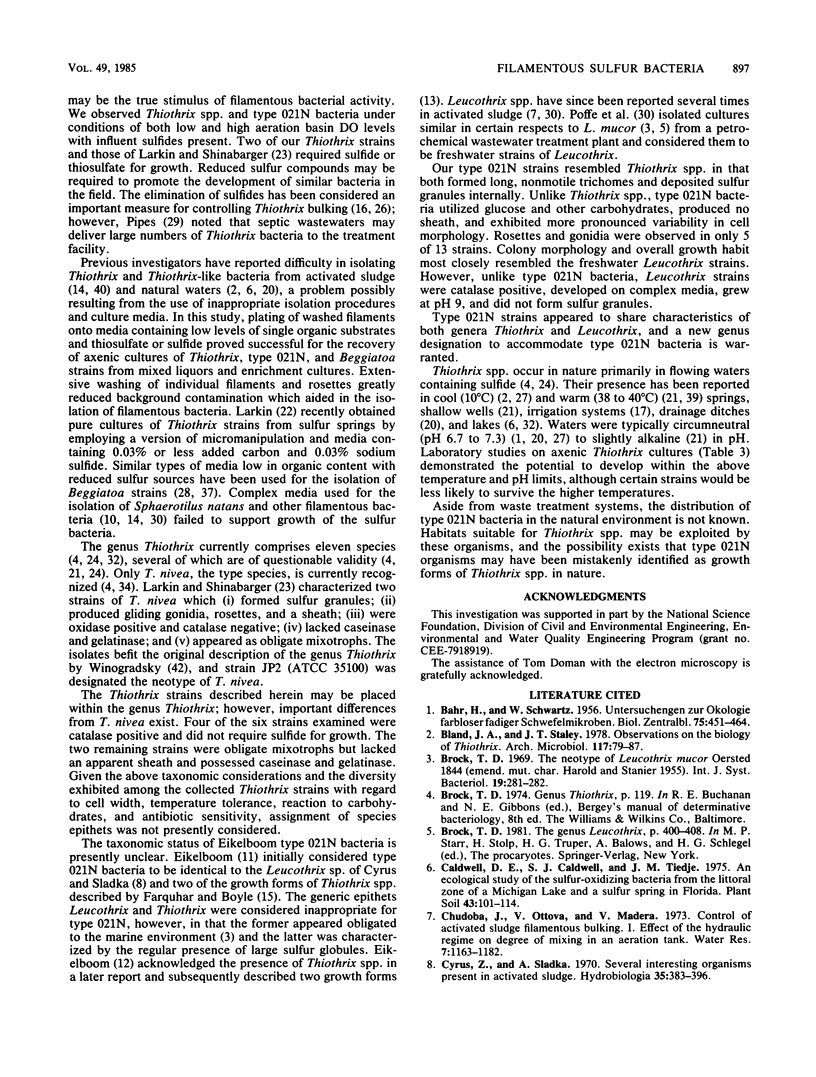

Images in this article
Selected References
These references are in PubMed. This may not be the complete list of references from this article.
- DEIBEL R. H., EVANS J. B. Modified benzidine test for the detection of cytochrome-containing respiratory systems in microorganisms. J Bacteriol. 1960 Mar;79:356–360. doi: 10.1128/jb.79.3.356-360.1960. [DOI] [PMC free article] [PubMed] [Google Scholar]
- DONDERO N. C., PHILLIPS R. A., HEUKELEKIAN H. Isolation and preservation of cultures of Sphaerotilus. Appl Microbiol. 1961 May;9:219–227. doi: 10.1128/am.9.3.219-227.1961. [DOI] [PMC free article] [PubMed] [Google Scholar]
- Farquhar G. J., Boyle W. C. Control of Thiothrix in activated sludge. J Water Pollut Control Fed. 1972 Jan;44(1):14–24. [PubMed] [Google Scholar]
- Farquhar G. J., Boyle W. C. Identification of filamentous microorganisms in activated sludge. J Water Pollut Control Fed. 1971 Apr;43(4):604–622. [PubMed] [Google Scholar]
- Farquhar G. J., Boyle W. C. Occurrence of filamentous microorganisms in activated sludge. J Water Pollut Control Fed. 1971 May;43(5):779–798. [PubMed] [Google Scholar]
- HUGH R., LEIFSON E. The taxonomic significance of fermentative versus oxidative metabolism of carbohydrates by various gram negative bacteria. J Bacteriol. 1953 Jul;66(1):24–26. doi: 10.1128/jb.66.1.24-26.1953. [DOI] [PMC free article] [PubMed] [Google Scholar]
- Morita R. Y., Burton S. D. Filamentous appendages of Thiothrix. Z Allg Mikrobiol. 1965;5(2):177–179. [PubMed] [Google Scholar]
- Nelson D. C., Castenholz R. W. Organic nutrition of Beggiatoa sp. J Bacteriol. 1981 Jul;147(1):236–247. doi: 10.1128/jb.147.1.236-247.1981. [DOI] [PMC free article] [PubMed] [Google Scholar]
- REYNOLDS E. S. The use of lead citrate at high pH as an electron-opaque stain in electron microscopy. J Cell Biol. 1963 Apr;17:208–212. doi: 10.1083/jcb.17.1.208. [DOI] [PMC free article] [PubMed] [Google Scholar]
- Spurr A. R. A low-viscosity epoxy resin embedding medium for electron microscopy. J Ultrastruct Res. 1969 Jan;26(1):31–43. doi: 10.1016/s0022-5320(69)90033-1. [DOI] [PubMed] [Google Scholar]
- Strohl W. R., Larkin J. M. Enumeration, isolation, and characterization of beggiatoa from freshwater sediments. Appl Environ Microbiol. 1978 Nov;36(5):755–770. doi: 10.1128/aem.36.5.755-770.1978. [DOI] [PMC free article] [PubMed] [Google Scholar]
- van Veen W. L. Bacteriology of activated sludge, in particular the filamentous bacteria. Antonie Van Leeuwenhoek. 1973;39(2):189–205. doi: 10.1007/BF02578852. [DOI] [PubMed] [Google Scholar]



